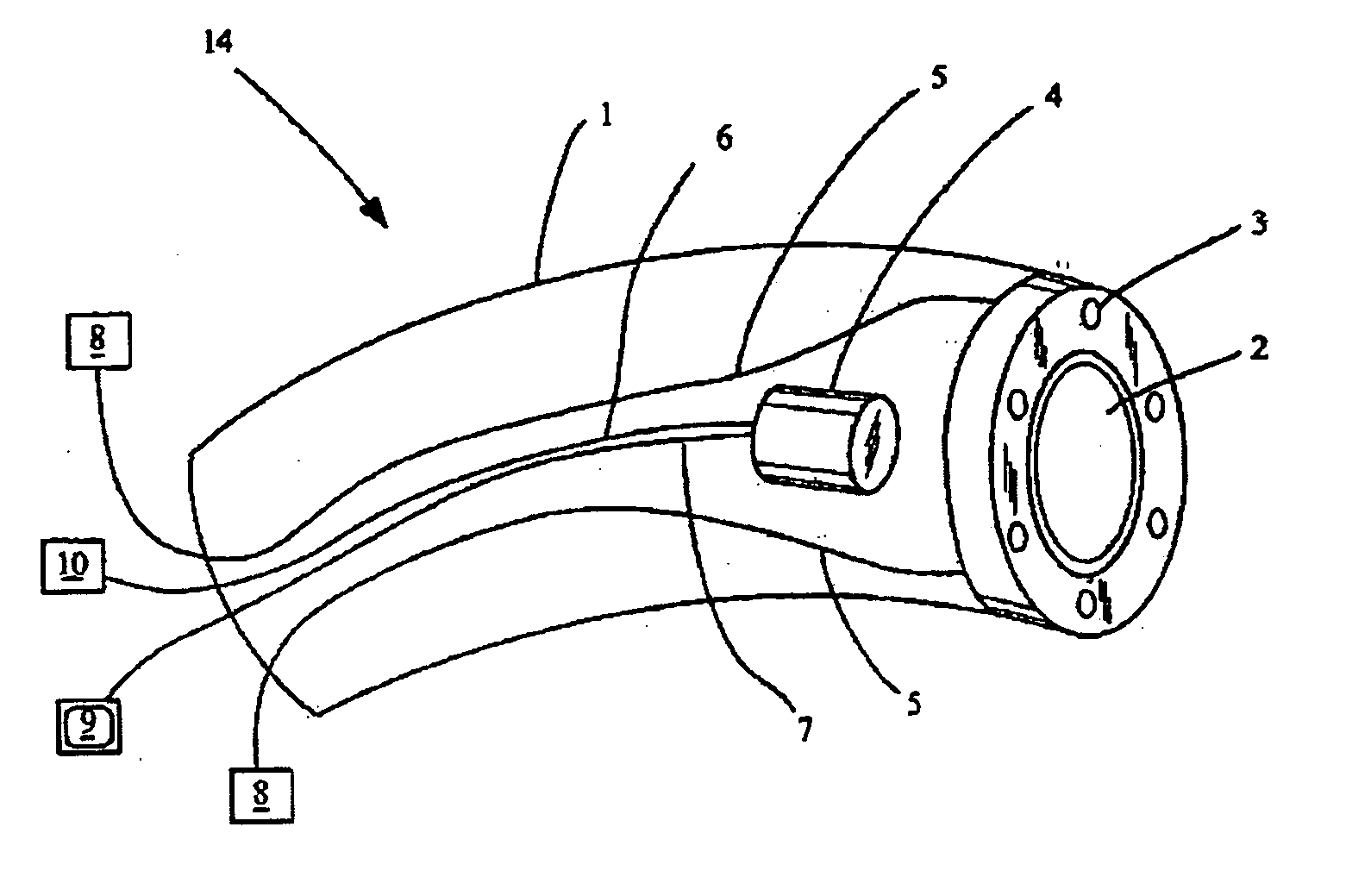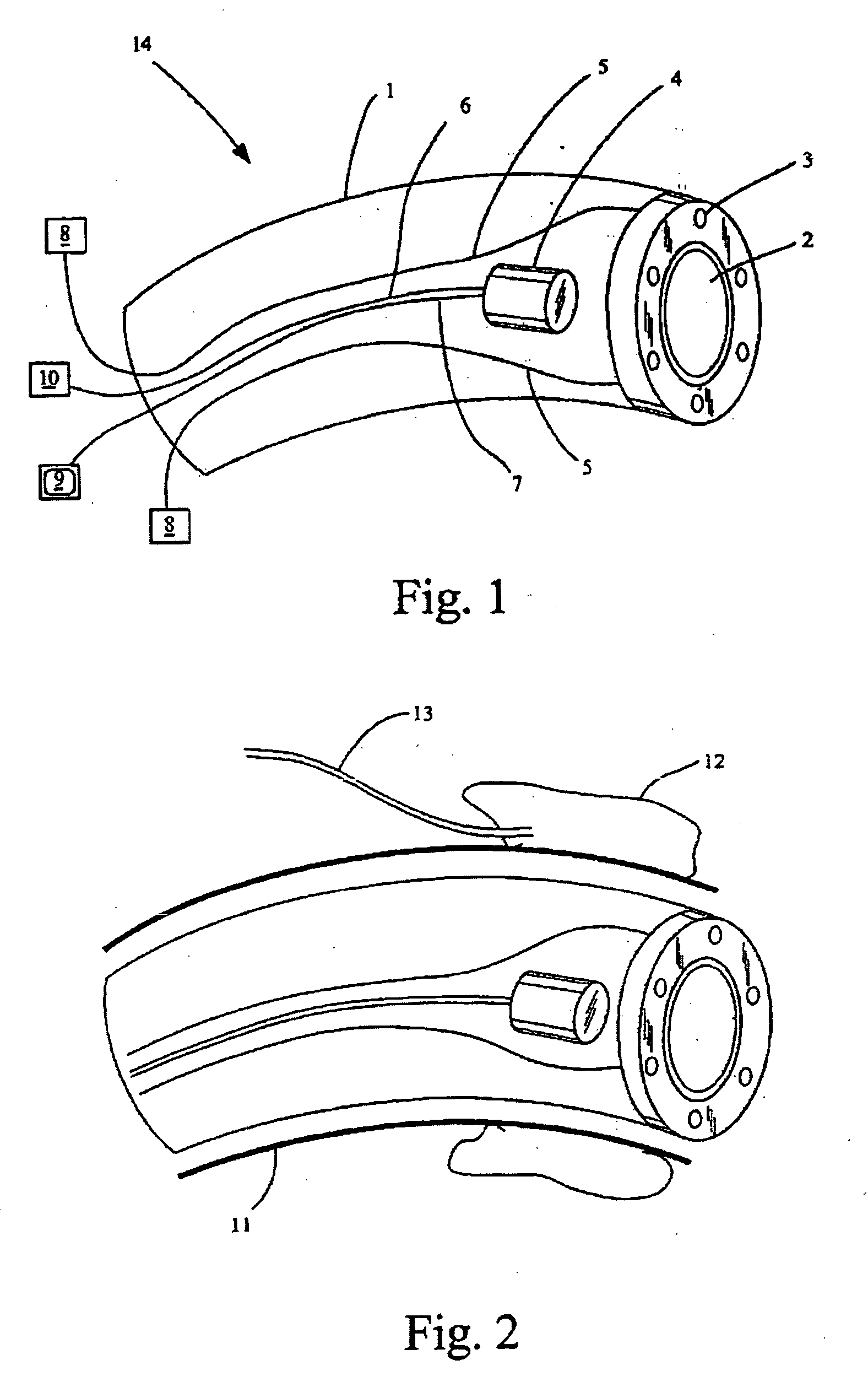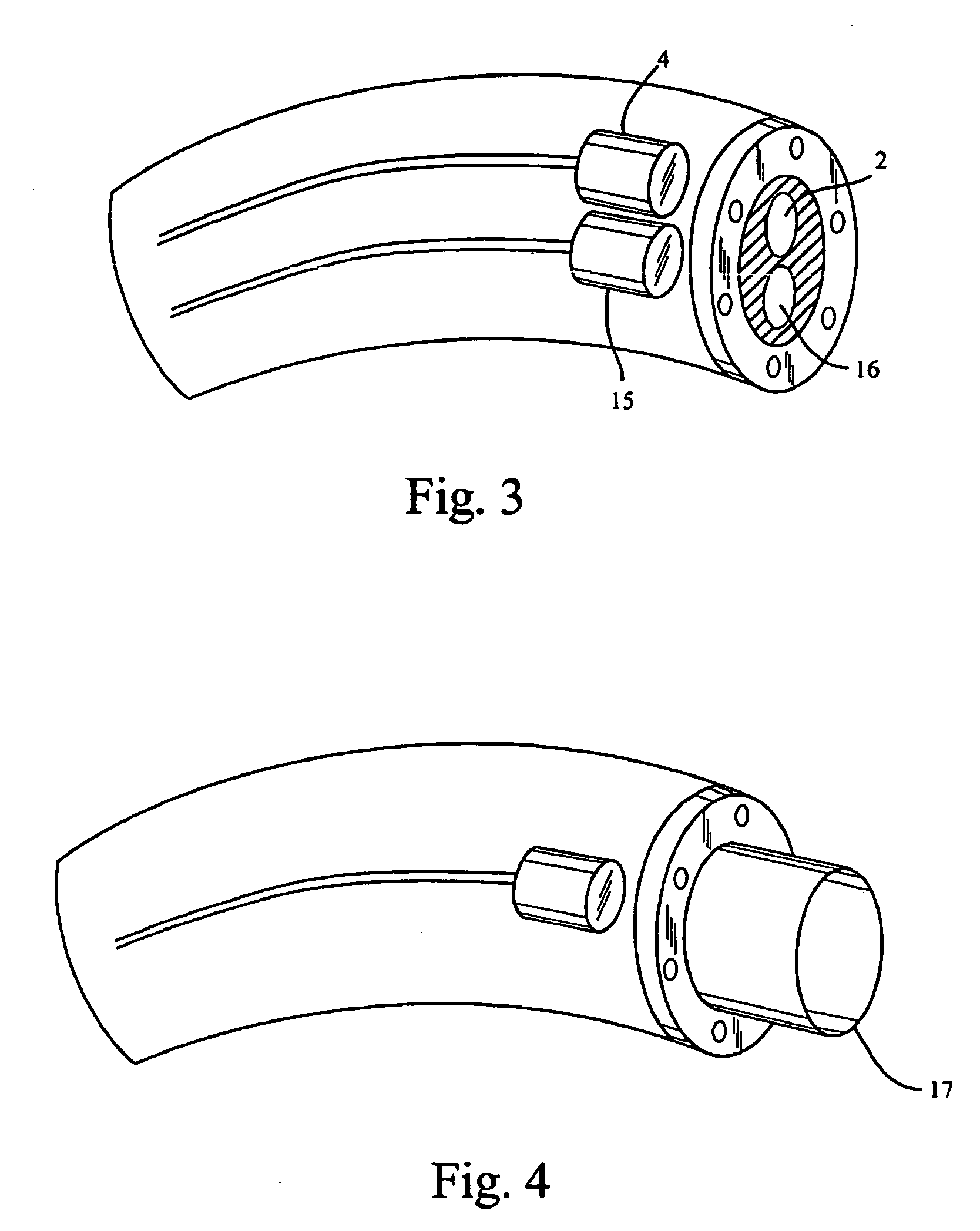Visualization stylet for medical device applications having self-contained power source
a technology of self-contained power source and visualization stylet, which is applied in the field of medical devices, can solve the problems of endotracheal intubation, morbidity and mortality of patients during anesthesia, and the inability of laryngoscope alone to provide a clear view of the patient's glottis, etc., and achieves the effect of being effectively disposable, low cost of construction, and convenient us
- Summary
- Abstract
- Description
- Claims
- Application Information
AI Technical Summary
Benefits of technology
Problems solved by technology
Method used
Image
Examples
Embodiment Construction
[0054] Referring to FIGS. 1 and 2, a schematic representation of visualization stylet 14 constructed in accordance with the principles of the present invention is described. All the elements in this particular embodiment of the stylet are contained within the lumen of stylet tube 1, although other embodiments may comprise additional features or elements in other locations. The stylet in this particular embodiment has a plurality of white LED lights 3 disposed in a circular pattern at the outside circumference of the distal tip of the stylet, surrounding central lens 2. The lens focuses light from an image onto CMOS camera 4. The LED lights receive power from one or more power conduits 5 that are electrically connected to power supply 8. The power supply comprise one or more dry cell batteries contained within the body of the stylet. The camera, which may be a CMOS or CCD camera, is centered within the axis of the lumen and slightly behind the distal tip of stylet tube 1, shielded fr...
PUM
 Login to View More
Login to View More Abstract
Description
Claims
Application Information
 Login to View More
Login to View More - R&D
- Intellectual Property
- Life Sciences
- Materials
- Tech Scout
- Unparalleled Data Quality
- Higher Quality Content
- 60% Fewer Hallucinations
Browse by: Latest US Patents, China's latest patents, Technical Efficacy Thesaurus, Application Domain, Technology Topic, Popular Technical Reports.
© 2025 PatSnap. All rights reserved.Legal|Privacy policy|Modern Slavery Act Transparency Statement|Sitemap|About US| Contact US: help@patsnap.com



